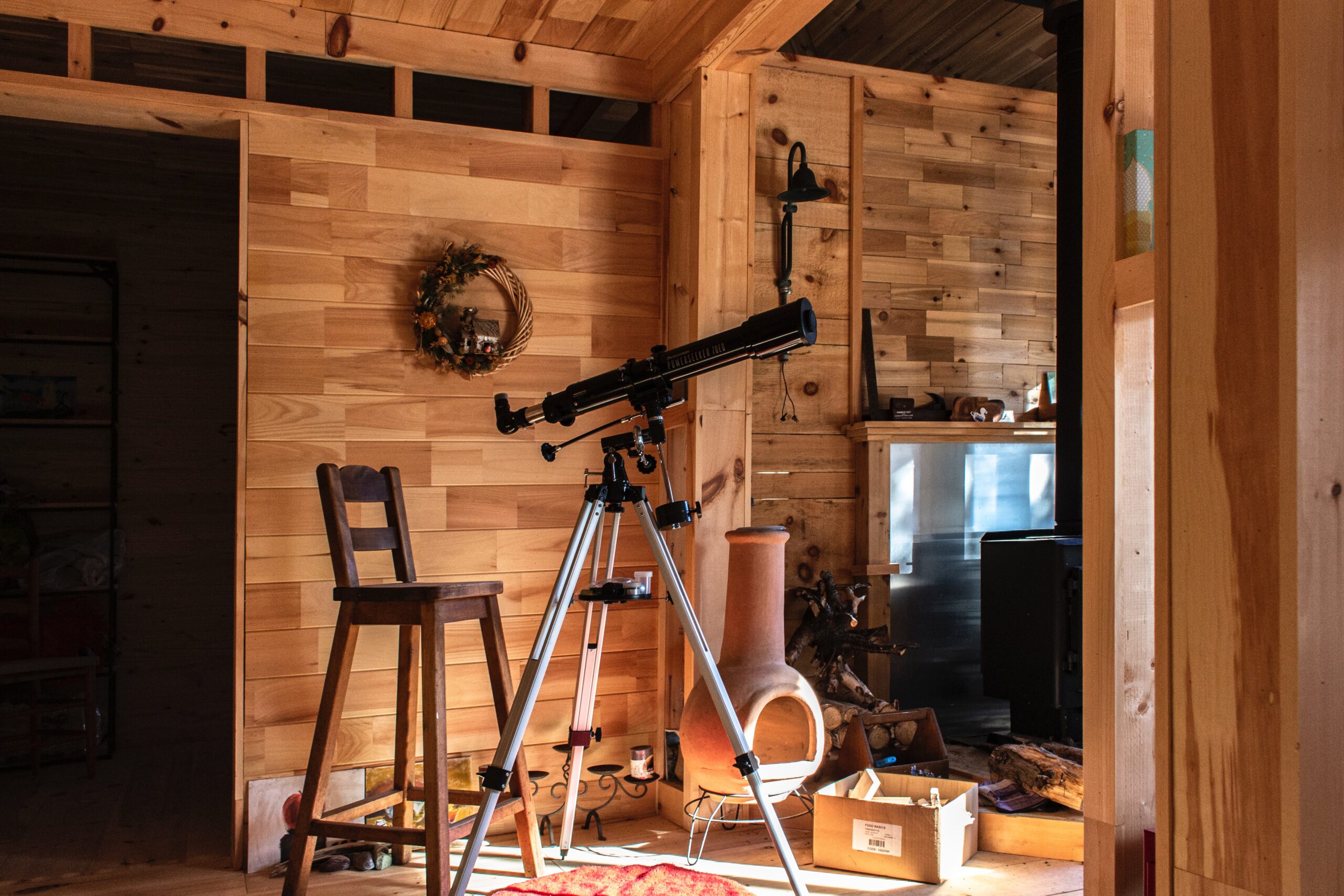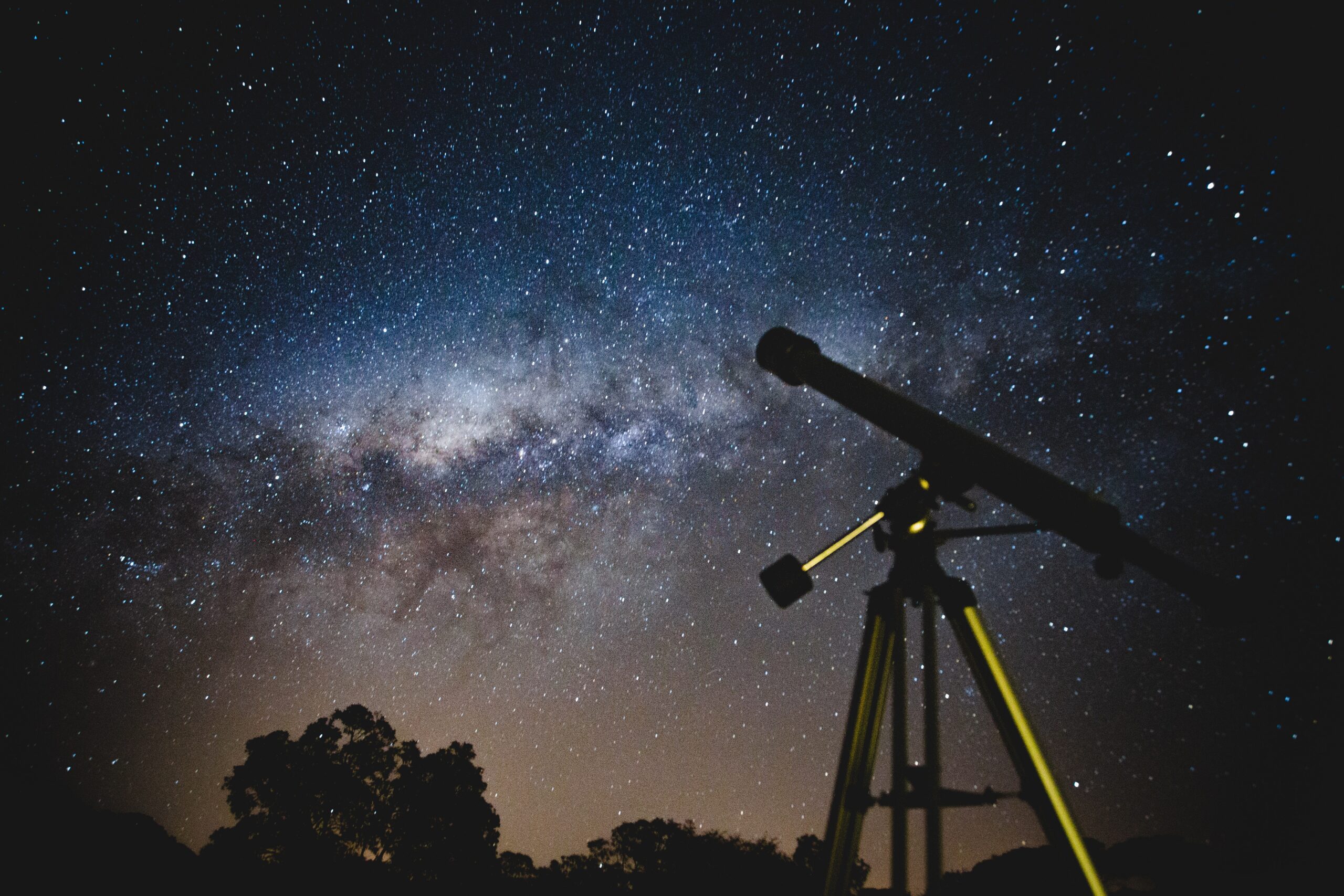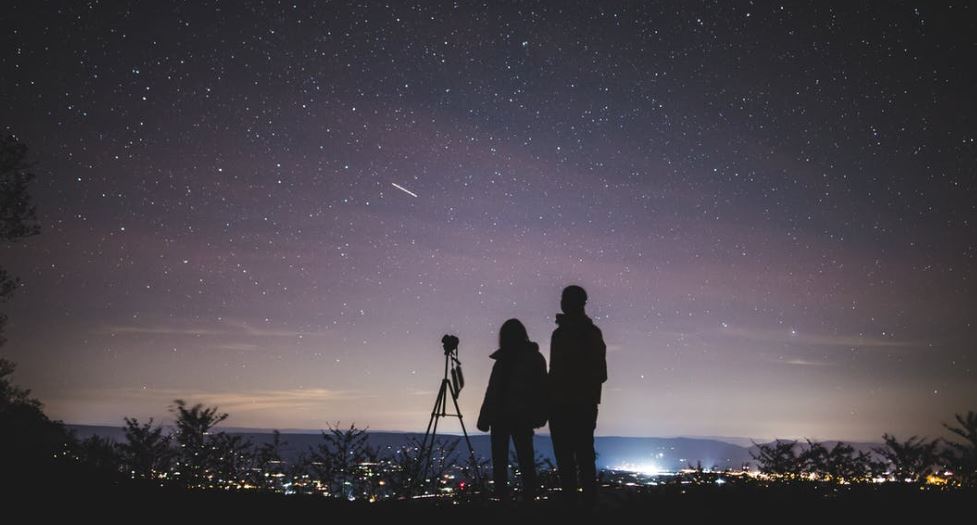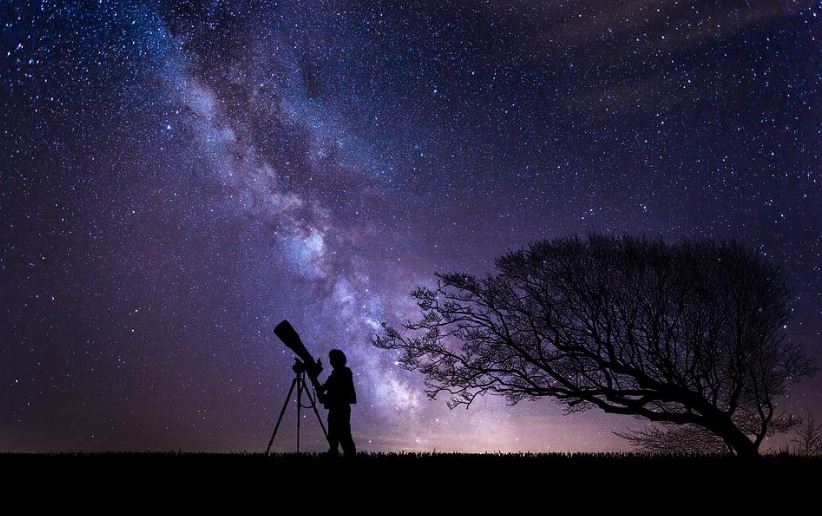Using a Telescope to Explore Deep Sky Objects: Nebulae, Star Clusters, and Galaxies
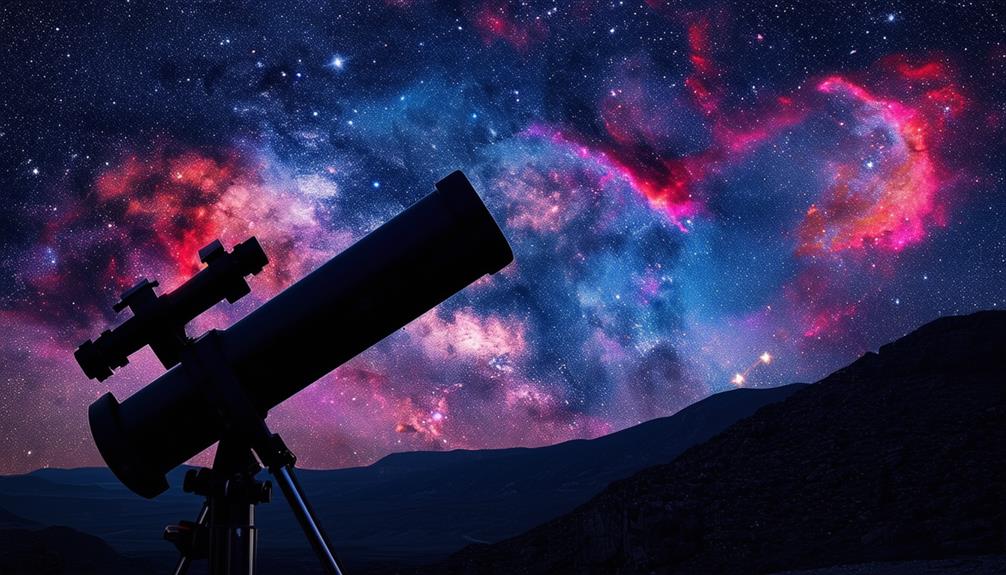
Exploring deep sky objects with a telescope invites you to systematically examine nebulae, star clusters, and galaxies. Dark nebulae, with their complex interplay of light and shadow, are just the beginning.
Adjusting your aperture and magnification settings is crucial, as these factors, along with the observational environment, significantly influence your discoveries. Each type of nebula, galaxy, and star cluster reveals unique aspects of the universe.
The journey doesn't end there; the techniques you employ and the conditions under which you observe can greatly enhance your celestial observations.
Dark Sky Observing Tips
To enhance the contrast and visibility of faint celestial objects, move away from light-polluted areas. Seek out a dark sky location to minimize light pollution and observe deep-sky wonders like nebulae, star clusters, and galaxies in greater detail.
Use averted vision by glancing slightly to the side of the object instead of looking directly at it. This technique leverages the more light-sensitive parts of your eyes, making dim details more apparent.
A larger telescope aperture gathers more light, revealing fainter objects and finer details. However, even with a modest telescope, a dark sky environment allows you to enjoy many deep-sky objects.
Occasionally, gently tap the telescope tube to reveal subtle details you might otherwise miss. By combining these tips, you'll optimize your deep-sky observing experience and uncover the hidden beauties of the universe.
Enhancing Dark Adaptation
To clearly observe faint celestial objects, maintain your eye's dark adaptation by waiting 30 minutes for them to fully adjust. Use a red flashlight to read star charts without disturbing your night vision. Block stray light with a hooded coat or fabric to keep your surroundings as dark as possible.
Maintain Eye Dark Adaptation
Allow at least 30 minutes for your eyes to fully adjust to the dark before observing nebulae, star clusters, and galaxies. This dark adaptation is crucial for seeing faint deep-sky objects through your telescope, as your eyes need time to optimize their sensitivity to dim details.
To maintain this dark adaptation, avoid exposing your eyes to any bright light. Using red goggles or covering your lights with red fabric can help preserve your night vision since red light is less disruptive compared to other colors.
Blocking side light is another effective strategy. Wear a hooded coat or use dark fabric to shield your eyes from stray light, enhancing your ability to see faint objects. Additionally, draping a piece of fabric over your head while looking through the telescope can further block out extraneous light.
For an extra push, gently tap the telescope tube. This can increase contrast, helping you pick out more details in nebulae, star clusters, and galaxies.
Utilize Red Light Strategically
Incorporating red light into your stargazing sessions can significantly enhance your night vision when observing deep sky objects such as nebulae, star clusters, and galaxies. Red light helps maintain dark adaptation by minimizing disruption to your eyes' sensitivity to low light conditions.
Unlike other light sources, red light doesn't stimulate the cone cells in your eyes, allowing the rod cells to remain sensitive and preserve your night vision.
Astronomers commonly use red light to navigate and read charts without compromising their dark-adapted vision. Red LED flashlights or headlamps are ideal for illuminating charts or devices during stargazing sessions.
Additionally, red light filters are effective in safeguarding your night vision. This tactic is crucial for those long nights spent observing deep sky objects, where even a brief exposure to white light can hinder your dark adaptation for up to 30 minutes.
Aperture and Magnification
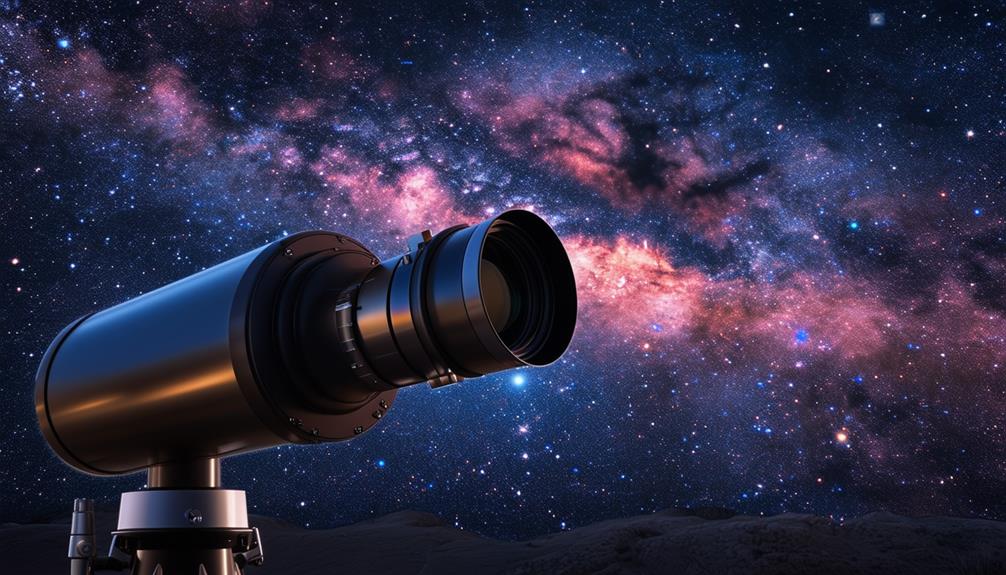
When exploring deep sky objects, consider your telescope's aperture size and magnification. A larger aperture enhances light-gathering capability, making faint objects like nebulae and galaxies more visible.
Effective magnification strategies can increase contrast and detail, providing clearer and more defined views.
Optimal Telescope Aperture Size
Choosing the right telescope aperture size is crucial for maximizing your view of deep sky objects. When observing nebulae, star clusters, and galaxies, a larger telescope aperture, such as 8 inches or more, significantly enhances your experience. A larger aperture gathers more light, allowing you to see fainter details and more intricate structures within these celestial wonders.
Maximizing light gathering is essential for bringing out the best in deep sky objects, but viewing conditions also play a critical role. Observing objects near the zenith or meridian minimizes atmospheric interference, resulting in clearer images. Additionally, using narrowband light pollution reduction filters can improve visibility, especially with larger telescopes.
Understanding and calculating the optimal exit pupil for your telescope setup can further refine your viewing experience. The exit pupil is the diameter of the beam of light leaving the eyepiece, and finding the right balance can optimize your ability to see details in nebulae, star clusters, and galaxies.
Effective Magnification Strategies
To effectively observe deep sky objects, you need to balance your telescope's aperture with the appropriate magnification. A larger aperture gathers more light, making faint galaxies and star clusters more visible. However, this must be paired with the right magnification.
Higher magnification darkens the sky background and enhances contrast, which is particularly useful for observing nebulae.
Additionally, consider atmospheric conditions. Observing objects near the zenith or meridian minimizes atmospheric distortion, providing clearer views. Using narrowband filters with larger telescopes can also reduce light pollution, further improving the clarity of deep sky objects.
Calculating the optimal exit pupil size is essential for maximizing your viewing experience. The exit pupil is the diameter of the light beam exiting the eyepiece and should match your eye's pupil to optimize light gathering. A good rule of thumb is an exit pupil of around 2-4 mm for observing galaxies and star clusters.
Observational Environment
For an exceptional stargazing experience, seek elevated observation points that minimize light pollution and atmospheric interference. Dark skies are essential for viewing deep sky objects like galaxies, nebulae, and star clusters. The less light pollution you encounter, the more vivid and detailed your observations will be. When choosing your observational setting, consider the impact of low light conditions on your ability to see faint objects clearly.
Cupping your hands around your head or the eyepiece can block excessive light, enhancing contrast and clarity. Opt for nights with good atmospheric transparency for optimal viewing conditions. Using a comfortable chair during observation sessions can help prevent fatigue, allowing you to enjoy longer stargazing periods. Additionally, avoid alcohol and drugs to maintain your sensitivity to low light, ensuring sharper vision.
Here's a quick reference table to optimize your observational environment:
| Tip | Why It Matters | How to Implement |
|---|---|---|
| Select elevated observation points | Reduces light pollution and interference | Find higher areas or secluded locations |
| Use hands to block excessive light | Enhances contrast and clarity | Cup hands around head/eyepiece |
| Choose nights with good transparency | Ensures optimal viewing conditions | Check weather and atmospheric conditions |
Types of Nebulae
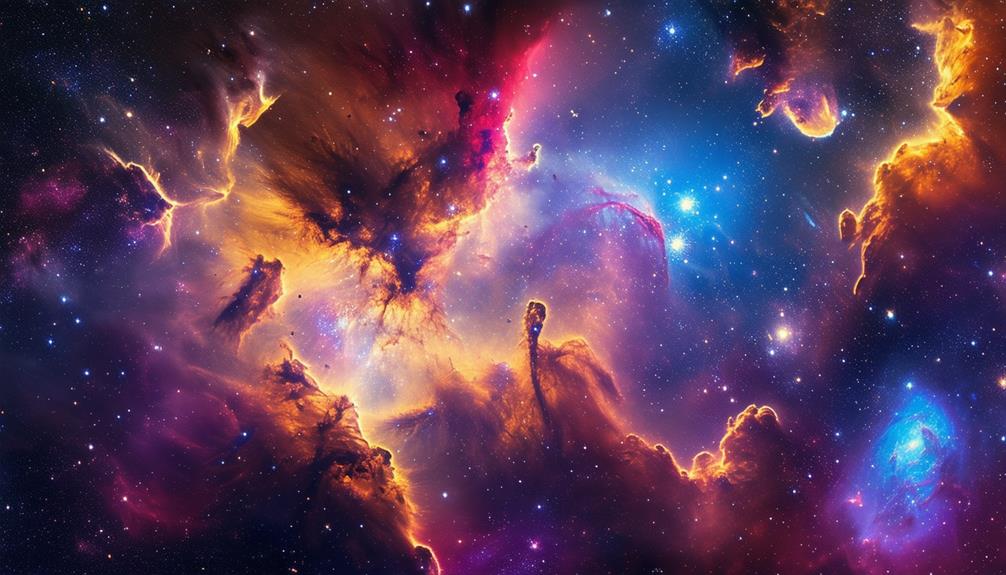
When exploring the night sky, you'll encounter various types of nebulae, each with unique properties and captivating visual features.
- Emission Nebulae: Composed primarily of hydrogen, these nebulae emit ultraviolet light and display vibrant colors such as red, blue, or green. Notable examples include the Orion Nebula and the Lagoon Nebula.
- Reflection Nebulae: These nebulae reflect light from nearby stars, often appearing blue. They're frequently found alongside emission nebulae. The Witch Head Nebula is a well-known example.
- Dark Nebulae: Also known as absorption nebulae, these nebulae block visible light, creating dark patches against the starry backdrop. They're commonly found in molecular clouds, with the Horsehead Nebula being a prominent example.
You will also encounter Planetary Nebulae, which are formed from the outer layers of dying stars. Famous examples include the Ring Nebula, Dumbbell Nebula, and Helix Nebula. Our Sun is expected to form one in the distant future.
Finally, Supernova Remnants are the remains of exploded stars, offering insights into the lifecycle of stars and the structure of galaxies. Key examples include the Crab Nebula and SN 1987A.
Each type of nebula provides a unique perspective on the vastness and complexity of our galaxy.
Types of Galaxies
When exploring the cosmos, you'll encounter various types of galaxies, each offering unique structural characteristics and insights into cosmic evolution.
Spiral galaxies, which make up about 60% of observable galaxies, feature striking spiral disks where stars twinkle and new stars actively form. Notable examples include the Pinwheel and Whirlpool Galaxies. The Andromeda Galaxy, a barred spiral galaxy like our Milky Way, features a central bar structure and vibrant star formation in its arms.
Elliptical galaxies account for approximately 10% of the galaxy population. Characterized by their elongated spherical shapes, they consist mainly of ancient stars and lack new star formation. Examples like M87 and IC 1101 showcase these serene, mature stellar environments.
Irregular galaxies also constitute around 10% of observable galaxies and lack defined shapes. They're relatively small and often appear chaotic, offering a glimpse into varied galactic forms. Examples include IC 3583 and PGC 18431.
As you gaze at the night sky, either with the naked eye or through a telescope, you'll find that each galaxy type presents a unique chapter in the grand story of the cosmos.
Types of Star Clusters
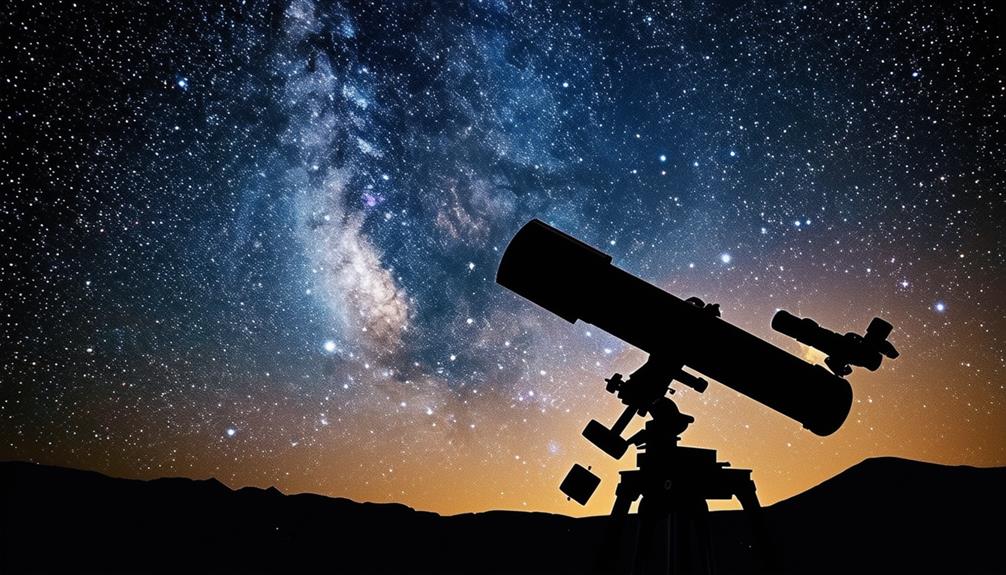
In your exploration of the cosmos, you'll encounter fascinating star clusters that reveal the dynamic nature of our galaxy. These clusters, categorized into two main types—globular and open star clusters—offer unique insights into stellar formation and evolution.
Globular clusters are spherical collections of stars that orbit galactic cores and feature dense centers. One of the most famous examples is M13 in Hercules, an ancient and tightly packed cluster. Globular clusters reside primarily in the Milky Way's halo, making them intriguing Deep Sky Objects.
Open star clusters, on the other hand, are loose groups of stars forming irregular shapes. They orbit within a galaxy's disk and are generally younger than globular clusters.
Notable examples include:
- Pleiades in Taurus: Often called the 'Seven Sisters,' this bright cluster is easily visible to the naked eye.
- Beehive Cluster in Cancer: This cluster resembles a swarm of bees.
These clusters provide a vivid tapestry of the Milky Way's stellar population and are a must-see for any avid astronomer.
Conclusion
Exploring deep sky objects with a telescope immerses you in the wonders of the universe. You'll uncover the mysteries of nebulae, star clusters, and galaxies, each with their unique stories. To enhance your experience, improve your dark adaptation and choose the appropriate aperture and magnification for your telescope. Observing from a location with minimal light pollution is crucial.
By following these guidelines, your celestial exploration will be truly mesmerizing, offering endless revelations in the night sky. Embrace the adventure and let the cosmos guide you.

